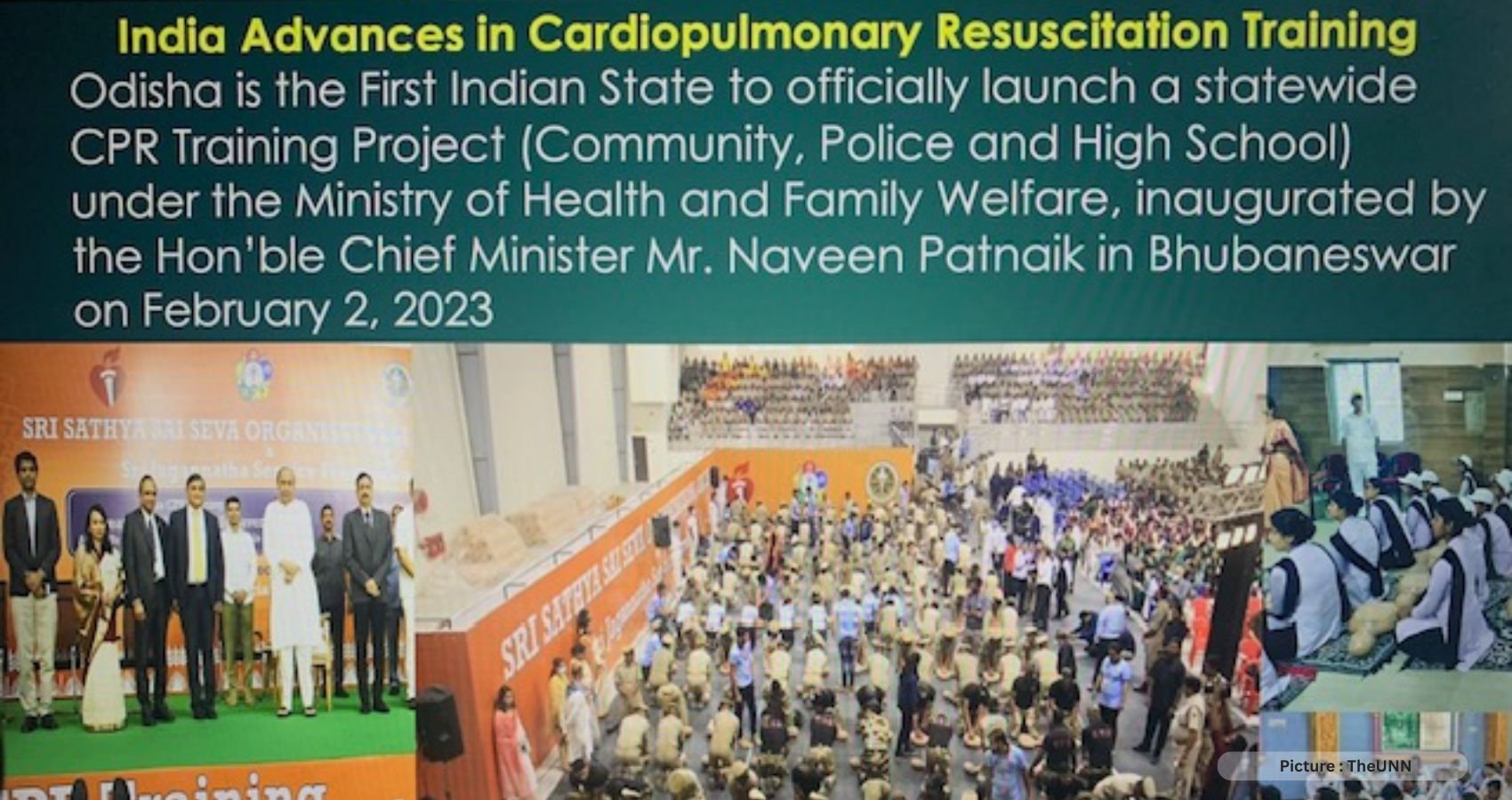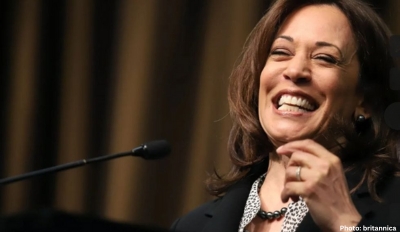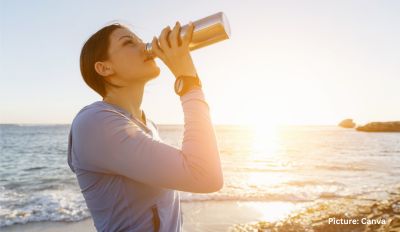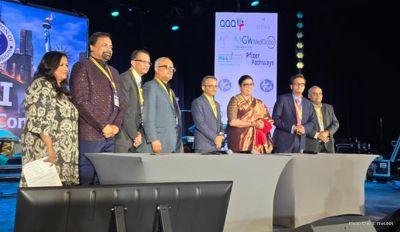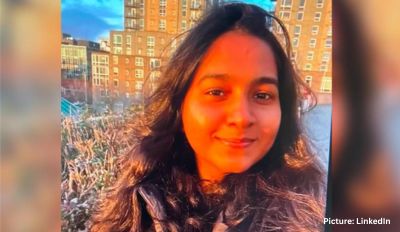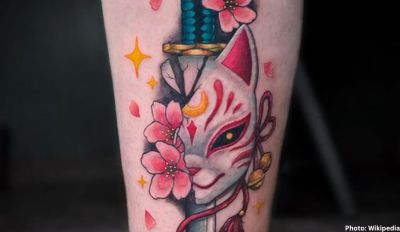
Odisha is the first Indian State to officially launch a statewide CPR training project (community, police, and high school/college students), which was inaugurated by the Hon’ble Chief Minister Mr. Naveen Patnaik in Bhubaneswar on February 2, 2023, supported by Sri Sathya Sai Seva Organizations, Odisha, and Sri Jagannatha Service Foundation,
Dr. Murthy is an Associate Professor (Adjunct) in Emergency Medicine at the University of Illinois College of Medicine, Chicago, Illinois, USA. He is an Honorary Advisor (CPR) to the Government of Odisha (Ministry of Health and Family Welfare) and a Visiting Professor to Indian Medical Institutions such as AIIMS (Mangalagiri, Andhra Pradesh).
A longtime American Heart Association (AHA) International Training Center Faculty and Advisor, Dr. Murthy has been involved with teaching and training Basic and Advanced Cardiac Life Support courses and Community Cardiopulmonary Resuscitation (CPR) initiatives for more than two decades in India and USA. He has also been involved with Indian Cardiac Arrest Research Projects affiliating with Indian Resuscitation experts.
Q. Good morning, Dr. Murthy. We are happy to have you with us today to discuss the number one Global Killer “Cardiovascular Disease” with a focus on Indians and Indian diaspora on the occasion of the “World Heart Day” on September 29.
A. Thank you! As you may be aware, “World Heart Day” is a global, multi-country, multi-lingual celebration day that was initiated by the World Heart Federation (WHF) in 1999 in conjunction with the World Health Organization (WHO) to raise awareness of Heart Disease and reminding everybody “to take care of their Hearts.” The theme for World Heart Day 2023 is “Use Heart for Every Heart”.
Q. Can you elaborate on the impact of Heart Disease in the World and India?
A. Cardiovascular Disease (CVD) is a disease of the Heart and the Blood Vessels leading to Heart Attack, Stroke, and Heart Failure, resulting in the deaths of about 20.5 million people annually in the world. 80% of these deaths are preventable.
According to the Cardiological Society of India (CSI), 36% of deaths in India are due to heart disease. The incidence of heart disease among Indians is 50-400% higher than other ethnic groups. About 50% of heart attacks occur in Indian men under the age of 50 years. 25% occur under 40 years. Indians (as South Asian Ethnic group) are more susceptible to heart disease than any other ethnic counterparts. More than 4200 sudden cardiac arrests occur per one lakh of the population in India annually, heart disease being the major contributor. 30-40% of these deaths occur between 35-64 years of age.
Q. What is the difference between a “Heart Attack” and a “Cardiac Arrest”?
A “Heart Attack” is due to obstruction of blood flow (block) in the Heart’s blood vessels (coronary arteries). The heart muscle starts dying quickly after a heart attack. A heart attack can lead to sudden cardiac arrest and death. Sudden Cardiac Arrest, SCA, (stoppage of the Heart) is Heart’s electrical activity failure due to several causes, primarily a heart attack.
Q. What are the other causes of Sudden Cardiac Arrest?
Besides a heart attack, sudden stoppage of the Heart can happen due to congenital abnormalities of the Heart, such as “Cardiomyopathies” (involving the heart muscle), valves and blood vessels of the Heart, infections of the Heart and electrolyte abnormalities (esp. Potassium and Sodium), drug overdose (Narcotics like Fentanyl, Cocaine and recreational street drugs), and sudden “injury or blow” to the chest (Commotio Cordis).
Commotio Cordis needs a special mention here. It’s due to sudden impact injury to the chest seen commonly in sports such as Cricket, Baseball, and Hockey. I can quote several anecdotes about Commotio Cordis (Sudden Cardiac Arrests) that were managed immediately on the spot with Bystander Cardiopulmonary Resuscitation (CPR) with complete recovery. It’s sad to see anybody of any age dying due to Sudden Cardiac Arrests due to lack of immediate “simple” help through “Bystander Hands-only or Compressions-only CPR.”
Q. How do you recognize a “Heart Attack”?
A. A “Classical” Heart Attack seen in the majority of people (especially men) is experienced as chest pain (mild, moderate, or severe) or discomfort (pressure or squeezing sensation) that radiates to the left shoulder, arm, back of chest, jaw/teeth. It may or may not be associated with sweating, nausea, dizziness, heartburn, or shortness of breath. Rarely, during “Silent Heart Attacks,” none of these symptoms may exist or are minimally experienced.
Heart attacks in women need special attention. Most women experience “shortness of breath” instead of chest pain, which is common in men. This is an important evidenced-based information in light of the known fact that women’s heart attacks are under-addressed, under-diagnosed, and under-treated globally.
Q. How do you know if somebody is in Sudden Cardiac Arrest?
A. Firstly, any person of any age can have “Sudden Cardiac Arrest” anywhere and at any time.
From a layperson’s perspective, a person collapses suddenly, becomes unconscious with minimal or no breathing, and has no pulse. Prior symptoms such as chest pain, dizziness, palpitations, shortness of breath, vomiting, etc. may or may not be present.
Q. What happens if nothing is done immediately?
A. If no immediate emergency bystander help is available, the person will die in a few minutes. Our body needs oxygen all the time. In cardiac arrest, there is no blood supply and oxygen to any of the organs. The brain is most susceptible to lack of oxygen and starts “dying” in a few minutes much ahead of other organs. In most cases, the brain is “irreversibly damaged” in about 10 minutes or less without oxygen. The proportion of brain damage depends on the delay in commencing the CPR to restart the Heart and reestablish blood supply to the brain.
Q. What is Bystander CPR? What is the science behind it?
In most Adults, there will be some amount of oxygen left in the body for about 4-5 minutes after cardiac arrest for survival with or without brain damage. With regard to “Bystander Hands-only or Compressions-only CPR”, there is enough evidence-based information to support the fact that only chest compressions (100-120 per minute in the center of chest) performed by bystander in the initial few minutes of cardiac arrest will be as effective as “Conventional CPR” performed with both compressions and breaths (30 compressions and two breaths sequence). Beyond 4-5 minutes or so, “breathing for the victim” is vital in addition to chest compressions. In infants, children, and persons with heart and lung conditions, drug overdose, and drowning, “Conventional” or “Compressions plus Breaths” CPR is needed for survival. Without immediate CPR, 90% of the victims die. Bystander CPR increases the chances of the victim’s survival two to three times. Using an electrical device called “Automated External Defibrillator” (AED) soon with CPR will increase survival rates of the victims significantly.
Q. How to get trained in CPR?
A. The lifesaving Bystander CPR technique and using an AED are easy to learn. Taking a “CPR Training” class from any authorized organization is necessary. There are also videos available to teach the basics of Hands-only CPR. It is also essential to follow Governmental “Good Samaritan Laws” for liability protection while providing any emergency help.
Q. Are there any specific precautions for Bystander CPR during COVID-19 era?
A. Certainly! CPR is an aerosol (droplet)-generating procedure. Safety precautions must be taken for personal protection. Cover your and victim’s mouth and nose with any readily available face cover, cloth/mask before starting CPR. Thorough handwashing with soap and water should be done after providing CPR help. From the currently available information, the chances of getting infection while performing CPR are very minimal or insignificant.
Q. What are your thoughts on the progress and advances in the arena of Resuscitation in India in recent years?
Having been involved with Indian Resuscitation Medicine teaching, training, and research for some time, I am happy that India is making significant advances on several fronts of Resuscitation Medicine.
First, the academic curriculum in Indian Medical Colleges includes “Mandated Resuscitation” training for Medical Students, Residents, and Nurses. The training faculty has been providing Resuscitation Training in Governmental and Private Medical colleges. Some of the Institutions are also utilizing advanced simulation technology.
The Indian Government (Ministry of Health and Family Welfare) recently introduced comprehensive “Provider Course for Training Doctors in Trauma and Non-trauma” viz. mandatory “National Emergency Life Support” Courses for graduating Medical Students, Residents (Physicians) and Nurses. This is a commendable initiative for Indian Medical Educational System as the course curriculum, tailored to India, was developed by the experienced Indian Experts.
Community, Paramedic, High School and Police CPR trainings have peaked in recent years, thanks to the efforts of Indian Institutions such as EMRI (Emergency Management and Research Institute), Indian Resuscitation Council (IRC) and many other Indian Organizations. IRC became an official member of the ILCOR (International Liaison Committee on Resuscitation) recently. Medical Institutional affiliations such as the AIIMS -American Heart Association (“Nation of Lifesavers in India” Project) are making rapid progress. Odisha is the first Indian State to officially launch a statewide CPR training project (community, police and high school/college students) which was inaugurated by the Hon’ble Chief Minister Mr. Naveen Patnaik in Bhubaneswar on February 2,2023.
Indian Medical Institutions and Hospitals are focusing more and more on “Prevention of Cardiac Disease” in addition to improving cardiac care quality services. “Emergency Cardiac Care-Enhancing Outcomes” projects exemplified by “HeartRescue India (HRI) ” (collaboration of the University of Illinois Health, Chicago, USA, M.S. Ramaiah Medical College and Hospital, Bengaluru, Karnataka, India, and Medtronic Inc.) are making good progress.
Q. Why Indians or Indian diaspora are more prone to Heart Disease?
A great question! Several evidence-based studies, past and recent, from India, USA and other countries point to various contributing factors such as high BP, tobacco abuse in any form, diet high in carbohydrates, fats, and salt, obesity, high cholesterol, diabetes, lack of adequate exercise, stress and lifestyle, and genetic predisposition. They all contribute to the acceleration of plaques or “blocks” in the Heart’s blood vessels. Research also suggests that Indians have smaller sized heart blood vessels with narrow lumina that are also prone to high calcium deposits. In addition, genetic variations or abnormalities also play a significant role in about 6% of the Indians and their diaspora. One recent Indo-US collaborative study (Warangal Area Out-of-Hospital Cardiac Arrest Registry, WACAR) gave some insight into the epidemiology of Cardiac Arrests in India.
Q. As an advocate of “Healthy Hearts”, what preventive strategies do you recommend?
A. Awareness, early detection, and timely interventions are the keys to enhancing cardiac health and quality of life. The basics are stopping tobacco use, regular physical activity, healthy diet, maintaining an average weight, controlling blood pressure, cholesterol, and blood glucose, adequate sleep, and stress control through meditation/yoga. They should be tailored to individual needs as advised by their Physicians.
Meditation has several benefits. It’s scientifically proven that Meditation/Yoga pacifies parts of the brain related to stress. Recent research showed that eight weeks of the Mindfulness-Based Stress Reduction (MBSR) training programs increase the thickness of Hippocampus (gray matter concentration), the part of the brain responsible for memory and regulating emotions.
Q. What are your concluding comments?
Raising community awareness of Heart Disease, implementing Preventive “Healthy Heart” programs with health screenings and promoting Community CPR programs by the Government and Non-Governmental Organizations are the initial steps to start combating Cardiovascular Disease, improve outcomes in “Heart Emergencies” and enhance overall “Heart Heath”!
Thank You!
(Disclaimer: The information provided in the article is meant for educational purpose only to raise awareness of Heart Disease and Sudden Cardiac Arrests. It does not endorse any specific organization and is not a professional advice. The readers need to seek professional medical advice before following any suggestion).

